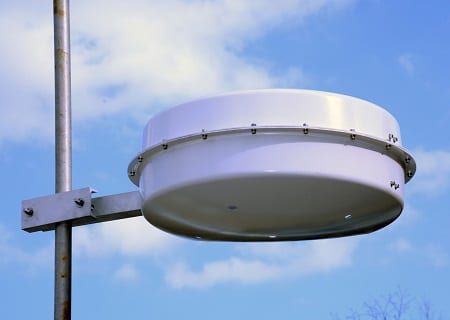Software simulator aids design and keeps costs down too
By Brian Ram, Vice President of Engineering and Programming, Full Power Radio
LEDYARD, Conn. — With 16 AM and FM signals serving four New England states, we at Full Power Radio certainly have our hands full as a locally owned and operated group. It’s a big reason why we invest in technology that keeps our operation humming and minimizes the amount of engineering labor we endure.
When it comes to RF, we exclusively rely on Dielectric antenna systems for our FM stations. Many of these stations are bolstered by translators that rebroadcast HD Radio channels in signal-challenged areas.
Our latest translator deployment is for WRMQ(FM) in Waterbury, Conn. We recently added a translator site (W258AL) to improve HD signal coverage in downtown Waterbury. The RF design proved especially tricky for this site due to downward radiation and signal suppression problems.
To overcome these challenges, the Dielectric team suggested a six-bay antenna design — a bit unusual for low-power (most translators are two- or four-bay designs), but exactly what we needed to fill downtown with our HD signal with a broader beam.
The six-bay design phase was accelerated using Dielectric’s High-Frequency Simulation Software, which allowed us to collaborate with their engineers in bringing the vision to life. This process commenced with a pattern optimization study with our consulting engineer. After that Dielectric mapped and brought the pattern to life in the HFSS program. That helped lower our project costs as it removed the labor of building a model on an outdoor test range.
SIGNAL PERFORMANCE
The antenna of choice was the DCR-T model, a low-power version of the flagship DCR-H antenna that transmits several of our main FM signals. Like all Dielectric antennas, the DCR-T is a finely engineered aluminum design that is lighter in weight than the steel antenna designs that permeate the market. The six-bay version reduces the amount of power required out of the translator to achieve our ERP, which also lowers our electricity bills.
It also gave us a circularly-polarized, directional pattern we required to optimize coverage in those hard-to-fill areas. The bays were half-wave space, which allowed us to achieve a proper phasing through an efficient bay inversion. The result, amplified through the circular pattern, is overall improved signal coverage.
The antenna itself is side-mounted to the 262-foot tower. With eight translators now running on these antennas, the DCR-T has proven very simple to install for our engineers. The quality of parts coming from Dielectric, including all connectors and transmission line, is just as important as the antennas itself.
With each bay weighing under 17 pounds, these are also easy to put together in the field just before the actual installation. No additional tower reinforcement work has been needed for any of our translator installations, including the ones with radomes for extra protection from the elements (this specific project excludes a radome). They are also very easy to tune in the field, which is helpful as translators are occasionally required to change frequencies.
What we have come to learn about Dielectric is that they provide an excellent price point — especially given the engineering quality — and continue to help us find ways to lower our costs. We recently had four translator jobs in process simultaneously; instead of charging per project, they charged per hour. Doing that in combination with the HFSS program returned a lot of money to our pockets. We have had very high success with Dielectric, and it’s hard to think of a better-equipped company to fulfill the antenna design needs associated with the increasing number of translators going on the air around the country.
For information, contact Kim Savage at Dielectric in Maine at 207-655-8258 or visit www.dielectric.com.

